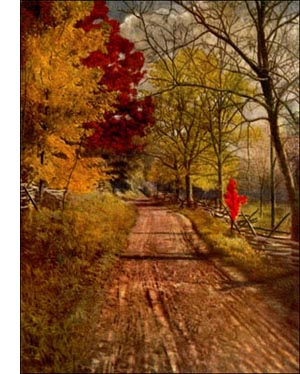Giant Arbor Vitae or Red Cedar Tree
 Giant Arbor Vitae, or Red Cedar (Thuya plicata, D. Don.)-A pyramidal tree, 150 to 200 feet high, with a stout, often corrugated and buttressed trunk. Bark scaly in narrow strips, thin. Wood light, brittle, reddish brown, soft, coarse, durable. Leaves minute, close, blunt, scale-like, with pale markings, longer on leading shoots. Flowers dark brown, monoecious, very small. Fruit erect clustered cones, with 6 fertile scales, each bearing 2 to 3 winged seeds. Preferred habitat, rocky stream banks and rich bottomlands. Distribution, coast regions from Cape Mendocino in California north into Alaska; mountains east into Idaho and Montana. Uses: A handsome ornamental tree, grown in Europe and occasionally in the Middle and North Atlantic States. Wood used for interior finish of houses, sashes, doors, furniture and cooperage. Indians use it for totem poles, framework of lodges and war canoes. Inner bark furnishes fibre for blankets, ropes and nets; sheets of it thatch their cabins.
Giant Arbor Vitae, or Red Cedar (Thuya plicata, D. Don.)-A pyramidal tree, 150 to 200 feet high, with a stout, often corrugated and buttressed trunk. Bark scaly in narrow strips, thin. Wood light, brittle, reddish brown, soft, coarse, durable. Leaves minute, close, blunt, scale-like, with pale markings, longer on leading shoots. Flowers dark brown, monoecious, very small. Fruit erect clustered cones, with 6 fertile scales, each bearing 2 to 3 winged seeds. Preferred habitat, rocky stream banks and rich bottomlands. Distribution, coast regions from Cape Mendocino in California north into Alaska; mountains east into Idaho and Montana. Uses: A handsome ornamental tree, grown in Europe and occasionally in the Middle and North Atlantic States. Wood used for interior finish of houses, sashes, doors, furniture and cooperage. Indians use it for totem poles, framework of lodges and war canoes. Inner bark furnishes fibre for blankets, ropes and nets; sheets of it thatch their cabins.Beside this giant of the Northwest, our Eastern arbor vitae is a pygmy. Solitary, or in small groves, it climbs the mountains to a level more than a mile higher than the rich river bottoms at sea level, where the noblest specimens and the greatest number are assembled. The Indian cuts the biggest specimen he can find for the totem pole that he carves into his family tree. The war canoes are dugouts made of the enormous butts which often measure 15 feet in diameter. Inside of the cabins the great rough-hewn rafters and joist of these primitive dwellings are of this arbor vitae, whose soft wood the crude implements of the tribes can work with comparative ease. The walls that enclose the Indian's house, the blankets that keep him warm, and the ropes, indispensable in fishing, in the harnessing of his dog teams, and in various other enterprises-all come from the fibrous inner bark of this tree. Truly it is a "tree of life" to the Alaskan aborigines.
In cultivation, this species far exceeds the other native in beauty and rapidity of growth. It is coming into popularity in the United States.